Impressionism: History, Characteristics, Artists
Impressionism was the first movement in modern art and had a great influence on the development of 20th-century art. As the most revolutionary style, Impressionism gradually penetrated the art flow of France in particular and the world in general.
Join us as we explore different aspects of the poetic, magical Impressionism school, from concept to characteristics and prominent artists.
What is Impressionism?
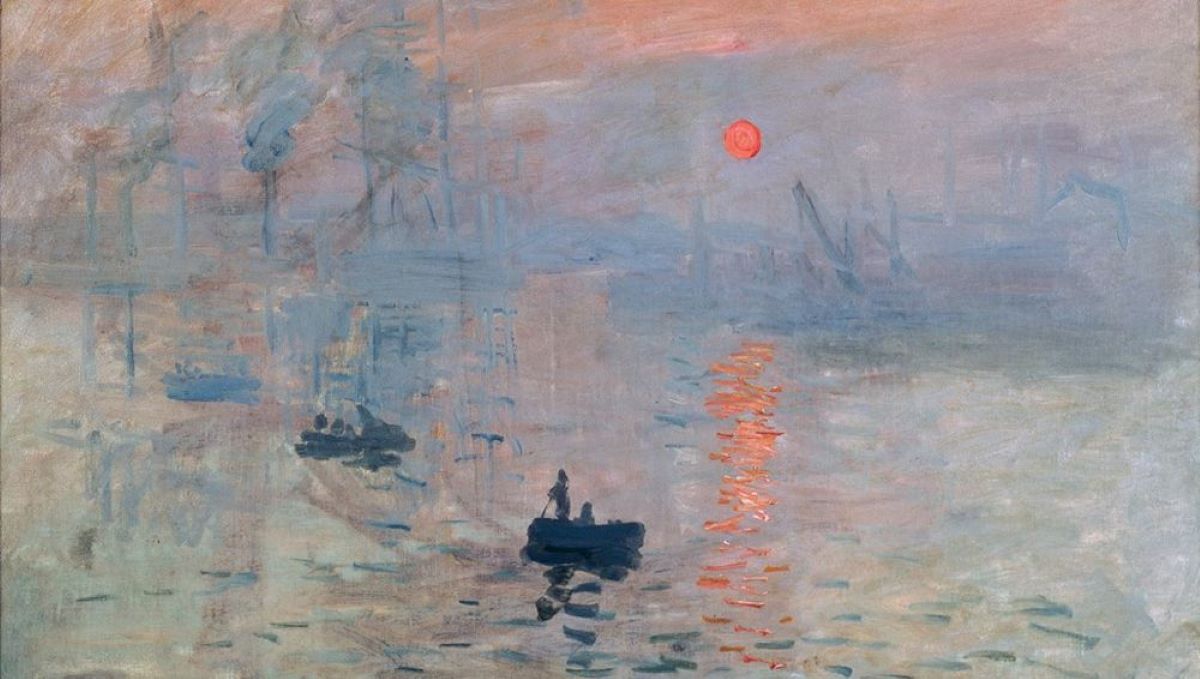
Impression, Soleil Levant (Impression, Sunrise) by Claude Monet
Impressionism (French: Impressionnisme) is an art movement that began in Paris (France) in the late 19th century. The Impressionists were not a formal group of artists, but a collective of painters who sought recognition for their innovative techniques and approaches to the use of color in art.
Impressionism marked an important step forward in painting. The name “Impressionism” was given by critics after a famous painting by Claude Monet – Impression, Soleil Levant (Impression, sunrise).
The History of Impressionism
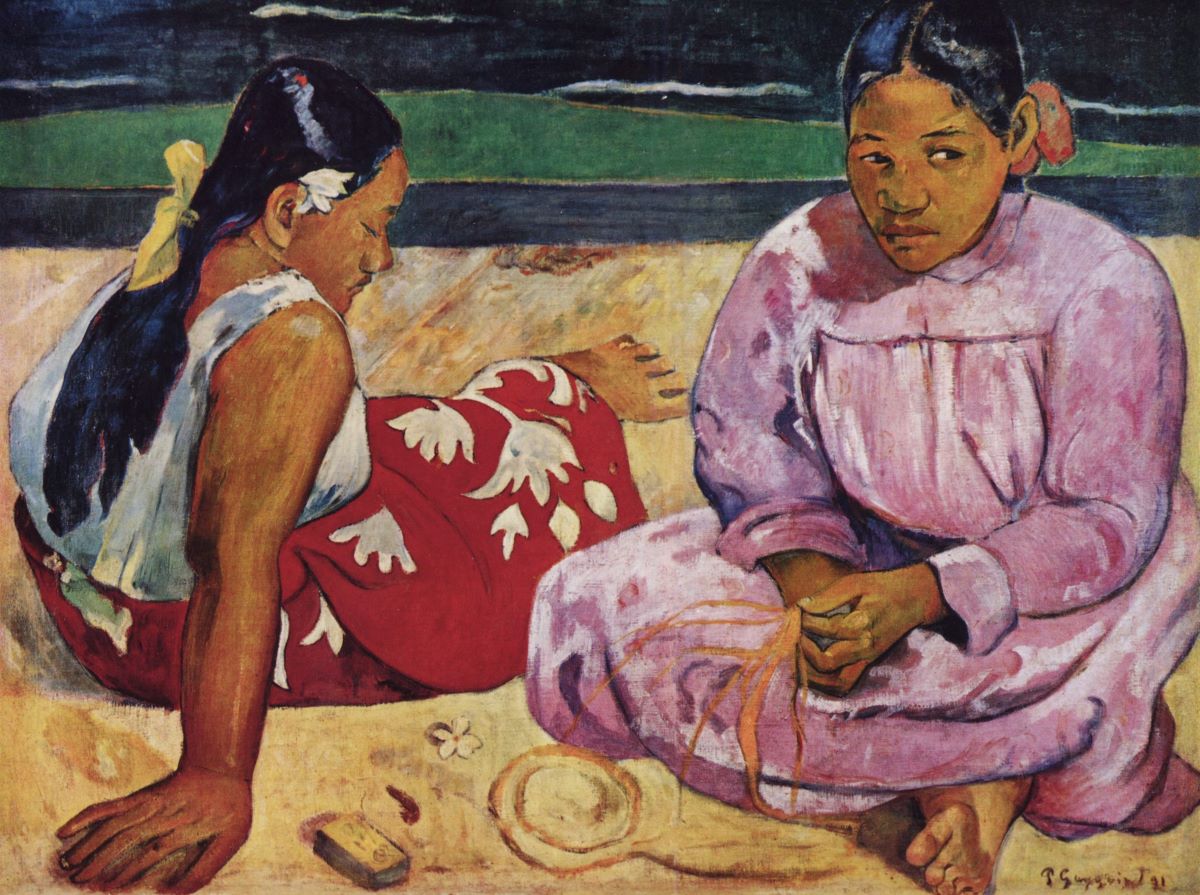
Tahitian Women on the Beach – Paul Gauguin
In 19th-century France, the painting world was almost surrounded by overly rigid rules. A group of young painters tried to break with tradition by avoiding the studio and its old values. Instead, they captured visual effects from landscape, light, and natural phenomena.
The artists were trained in private and free studios (Gleyre studio, Swiss École des Beaux-Arts) and exchanged ideas at the Café de Guerbois. Impressionism, proclaimed by William Turner, was influenced by Gustave Courbet and realism.
The “disciples” revered Delacroix, who had experimented before them with tonal division, complementary colors, and color contrasts. They also explored new sources of inspiration, taking advantage of Japanese prints and the newly invented photography of 1839.
Throughout the 19th century, the Academy of Fine Arts was the backbone of the French art establishment and organized the annual exhibition at the Salon de Paris. Any new work that challenged these standards was rejected, and many of the innovative young Impressionists were excluded from this exhibition. The artists were rejected by the Galleries. They lived in poverty and sought to make themselves known through private exhibitions.
The first manifestation took place in Paris in 1874 in the studio of the photographer Félix Nadar, rue Capucines. On this occasion, the journalist Louis Leroy of the Charivari newspaper gave birth to the word “impressionism” by ironically referring to the title of the famous painting “Impression, Sunrise” by Claude Monet.
Seven other exhibitions followed until 1886. From this point on the group began to split and disband. From the years 1880 to 1890, the movement made contact with foreign artists but mainly paved the way for liberal aesthetic reactions.
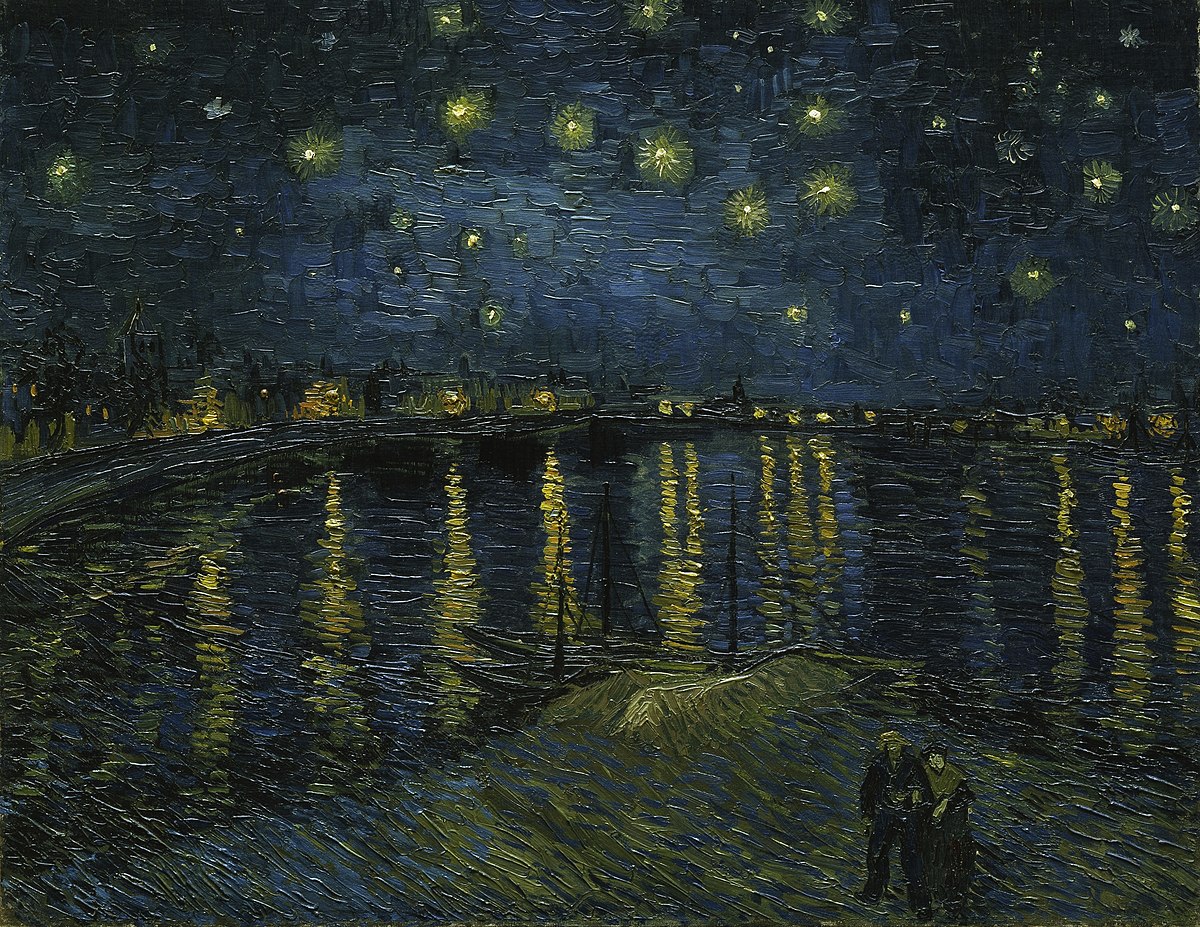
Starry Night on the Rhone – Van Gogh
Despite the hostility of many, Émile Zola and the art dealer Paul Durand-Ruel supported Impressionist painting, which had moved into a peaceful world free of the social, political, and economic hardships of the time. Journalist and art critic Thédore Duret bought the paintings and published The History of Impressionism in 1904.
Impressionism made breakthroughs. In terms of theme, the Impressionists broke away from traditional religious or historical themes and portrayed the beautiful scenes of real life.
In terms of color, they analyzed more precisely the effects of color and light in nature, gradually discovering the complementary principle of color. The outside was free brushstrokes, not limiting the details of the painting and emphasizing their personal style.
Characteristics of Impressionism
Impressionist paintings are painted with visible brushstrokes, unrestricted blending of colors, and an emphasis on the change and quality of light in the painting.
The notable idea in this school is the painting is painted very quickly with the aim of accurately recording the overall view of the scene. This is followed by expressing a new, fast, and unprejudiced view, different from the realist, naturalist school.
Impressionist Painting Techniques
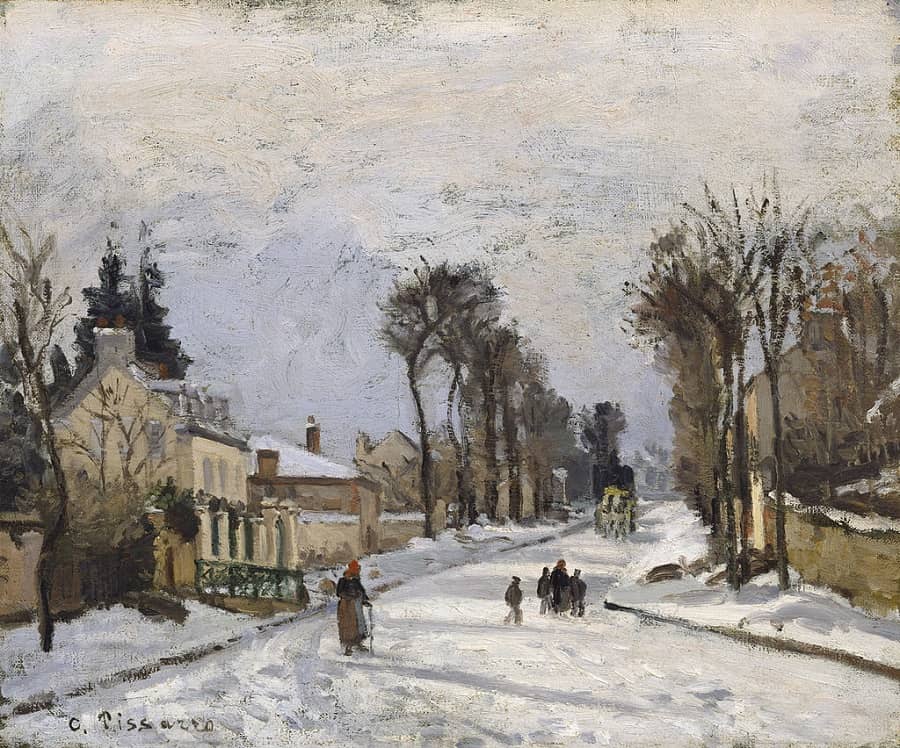
The Road to Versailles at Louveciennes – Camile Pissarro – 1869
The Impressionists were fascinated by contemporary developments in color theory – which helped their studies towards a more precise analysis of the effects of color and light in nature.
They abandoned the conventional idea – that the shadow of an object was drawn from the color of the object plus some brown or black. Instead, they enriched their palette with the idea that the shadow of an object was broken up into complementary color strokes. For example, in an Impressionist painting, the shadow of an orange might have some blue strokes added to it to add vibrancy.
Painters sought to capture the atmosphere of a particular time of day or the impact of different weather conditions on a landscape. To capture these fleeting effects, painters had to paint quickly.
This impressionist technique put them at odds with the conservatives at the French Academy of Fine Arts, who valued muted colors and precise detail. The Academy did not appreciate the freshness of impressionist colors and the energy of a unique naturalistic style. However, the public gradually grew to love the vitality of Impressionist techniques. Impressionism grew to become the most popular movement in the history of art.
Influences of Photography
At this time, photography was in its early stages of development. Because there was often a discrepancy between what the photographer saw in the camera’s viewfinder and what actually appeared on the negative, photographers would crop the image to improve the composition. This led to some unusual arrangements that emphasized the shapes at the edges of the image.
Some impressionists, such as Degas in his Four Dancers, embraced the asymmetrical effects of cropping and made it a prominent feature of the work.
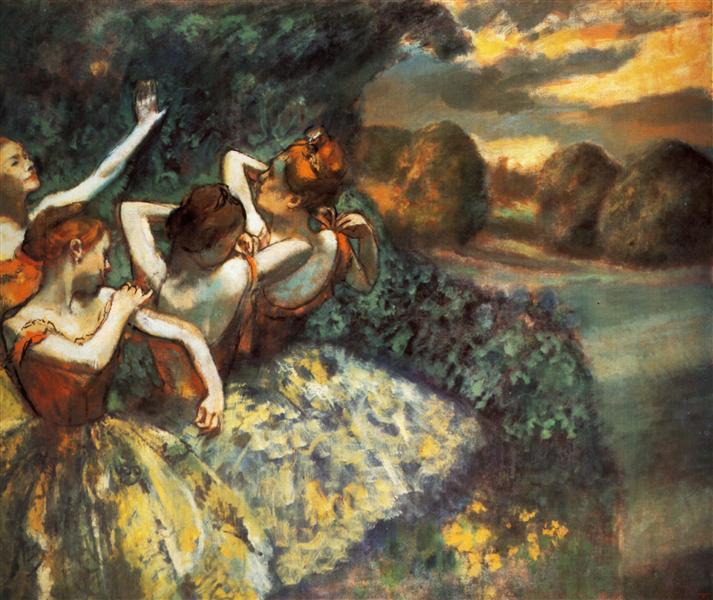
Four Dancers – Edgar Degas – 1900
Traditionally, artists worked with lines, shapes, tones, and colors arranged in a way that led the viewer to the focal point of the painting. This was the most important area of the painting and was usually located in the center. A work is considered bad if the background or edges of the painting detract from the focal point. True to form, the Impressionists broke this rule.
A common feature of the Impressionists’ paintings is that the light is spread throughout the space rather than concentrated on the center of the painting.
Influence of Japanese Woodblocks
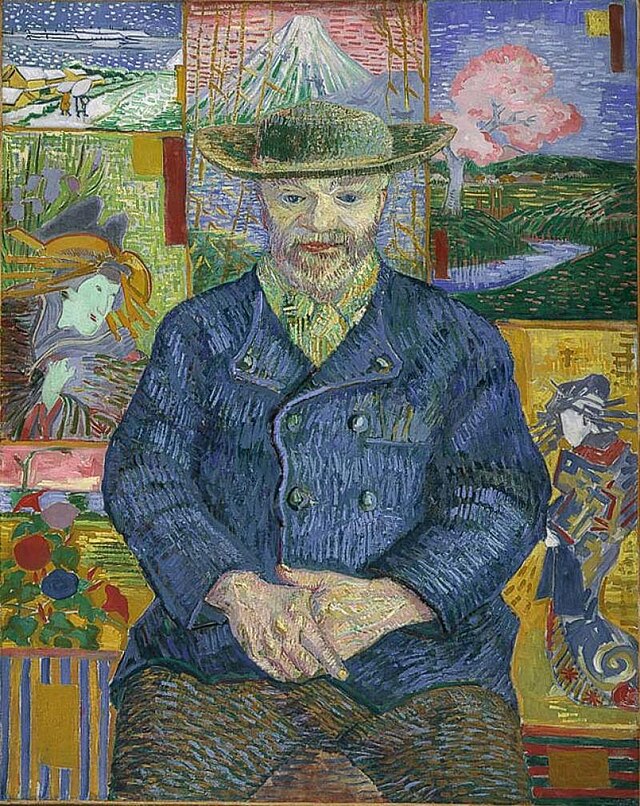
Portrait of Pere Tanguy – Vincent Van Gogh – 1887
The bold designs of Japanese woodblock prints popular in France at the time were also an influence on the Impressionists. The asymmetrical arrangement contrasts flat areas of color with complex patterns – a compositional structure that impressionists could use to develop their ideas about color. It is clearly seen in the paintings of Van Gogh – the famous post-impressionist painter.
Landscapes painted directly outdoors
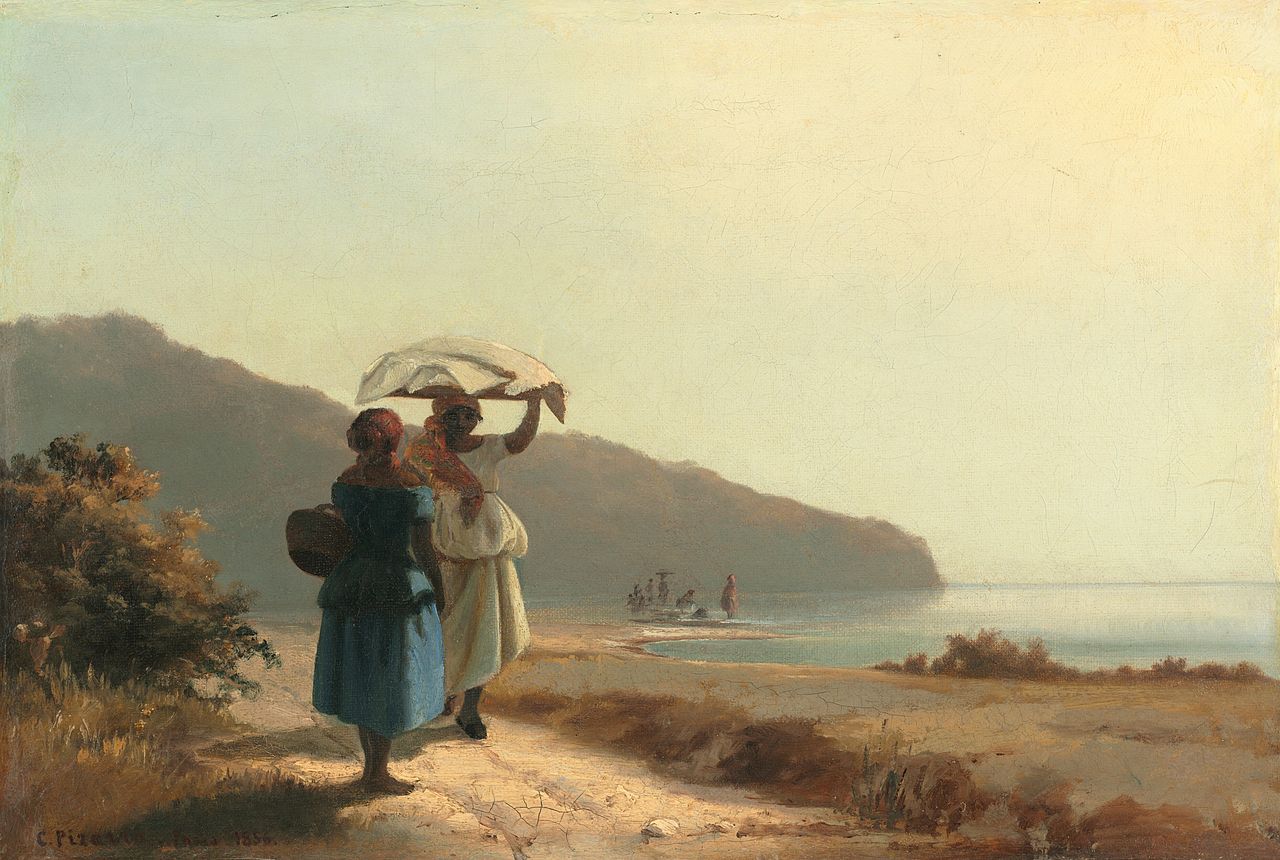
Two Women Chatting by the Sea, St. Thomas – Camille Pissarro
The Impressionists were the first group of artists to embrace the plein air (painting outside). It was partly due to the introduction of tube paint – which allowed artists to find all the equipment around their studio in one box for the first time.
They also felt the need to paint outdoors because they were interested in the effect of light on color in nature. Thus, landscapes (both urban and rural) became the most natural and influential subjects for the Impressionist painter.
Impressionism and Still Life
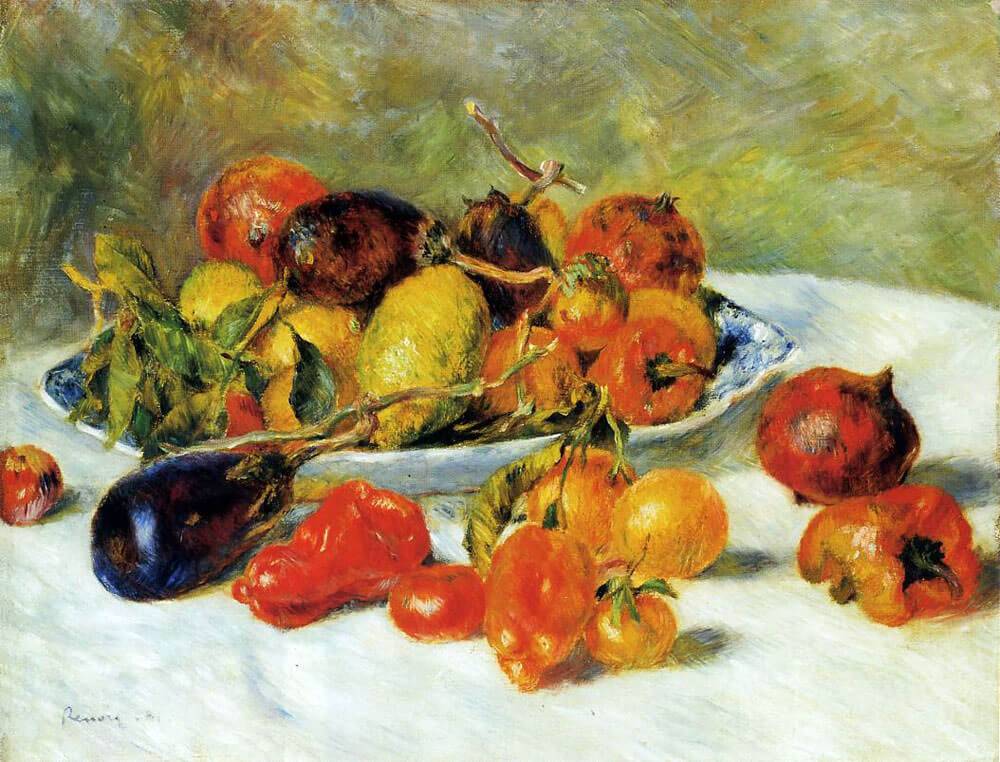
Fruit of the Midi – Pierre Auguste Renoir
Still life was not very popular with Impressionists, mainly because it was not a suitable “plein air” subject for capturing the qualities of light and color.
However, there are some outstanding examples, such as Renoir’s Fruit of the Midi, which carefully selected fruits and vegetables to create a range of vibrant colors that span the impressionist spectrum.
Here are the famous works of four post-Impressionists that we cannot help but mention: Vincent Van Gogh, Paul Cézanne, Paul Gauguin, and Georges Seurat.
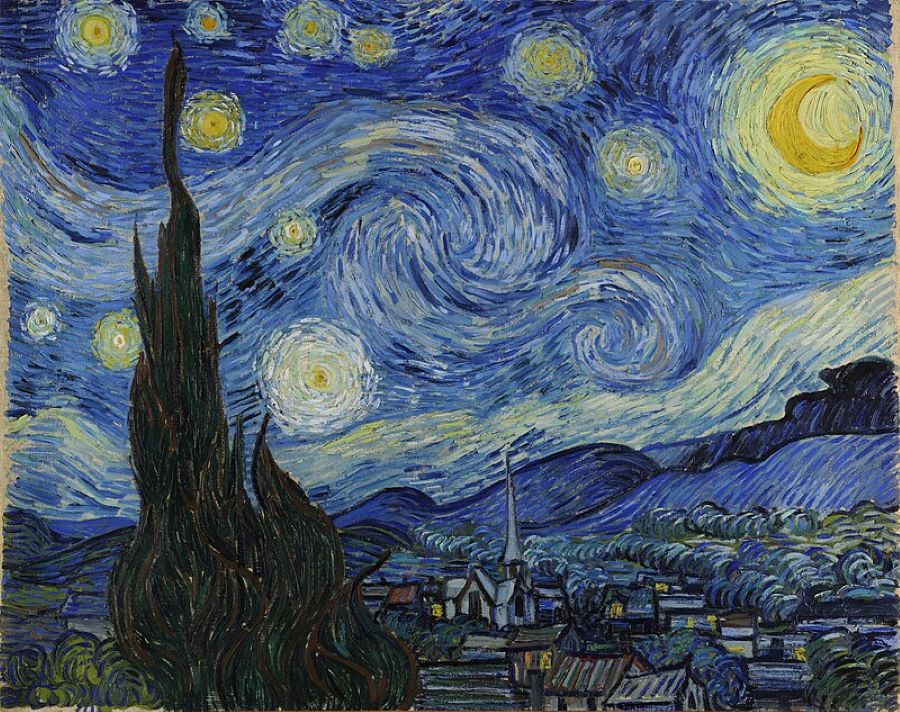
Starry Night – Van Gogh – 1889
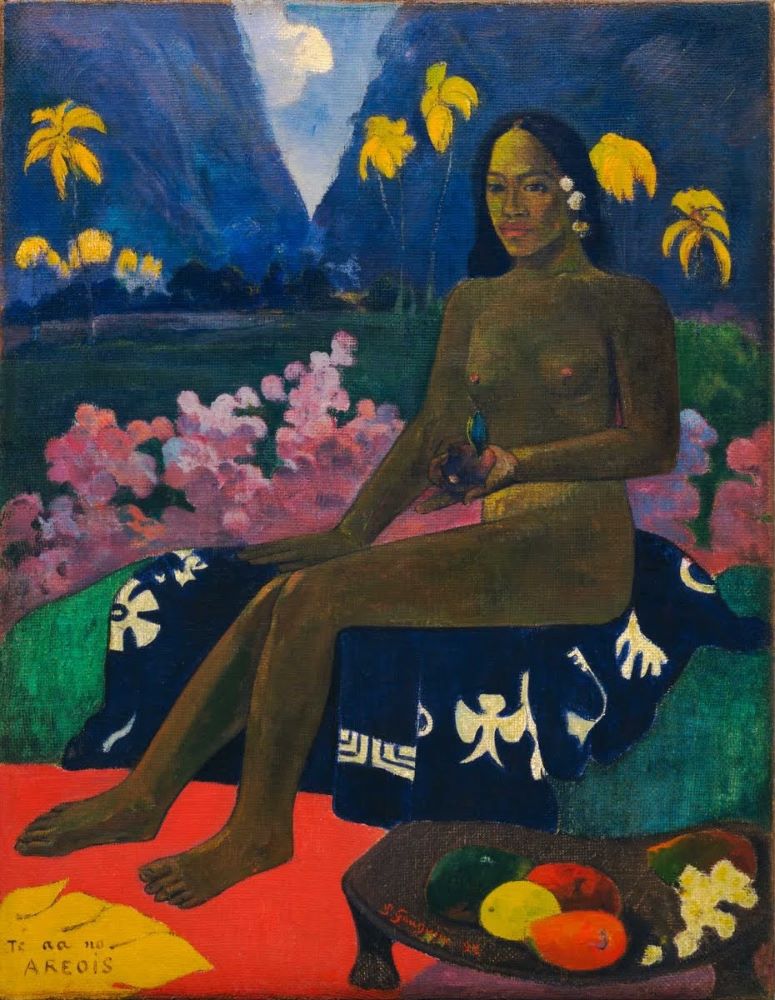
Seeds of the Areoi – Paul Gauguin
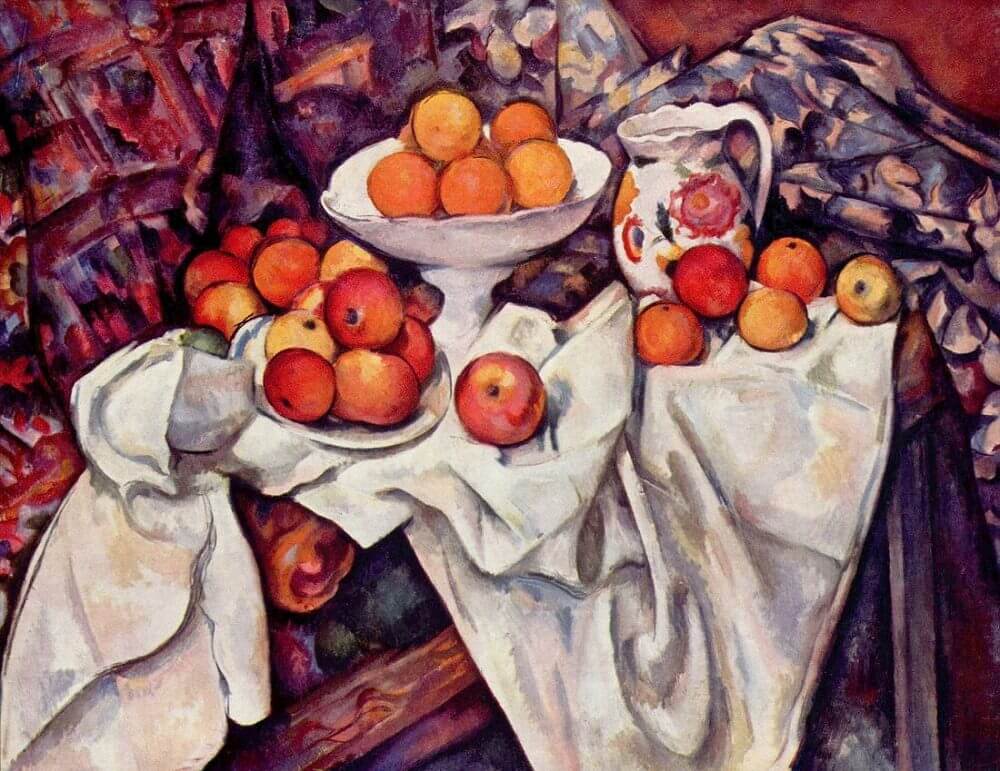
Apples and Oranges – Paul Cezanne
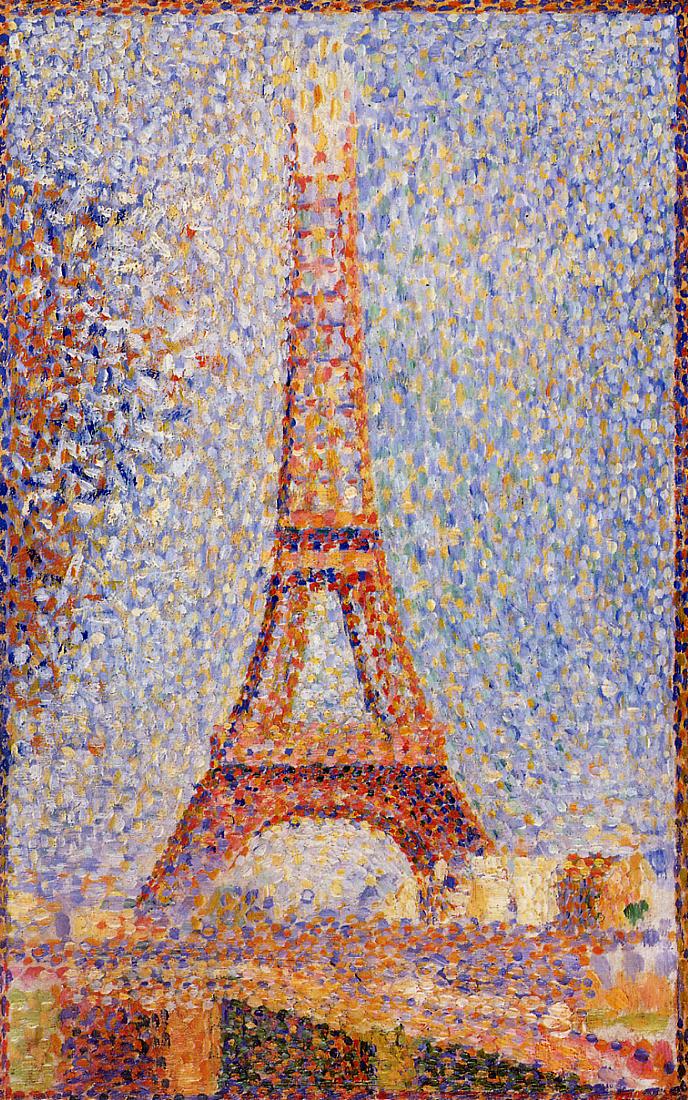
The Eiffel Tower – Georges Seurat
Notable Artists of Impressionism
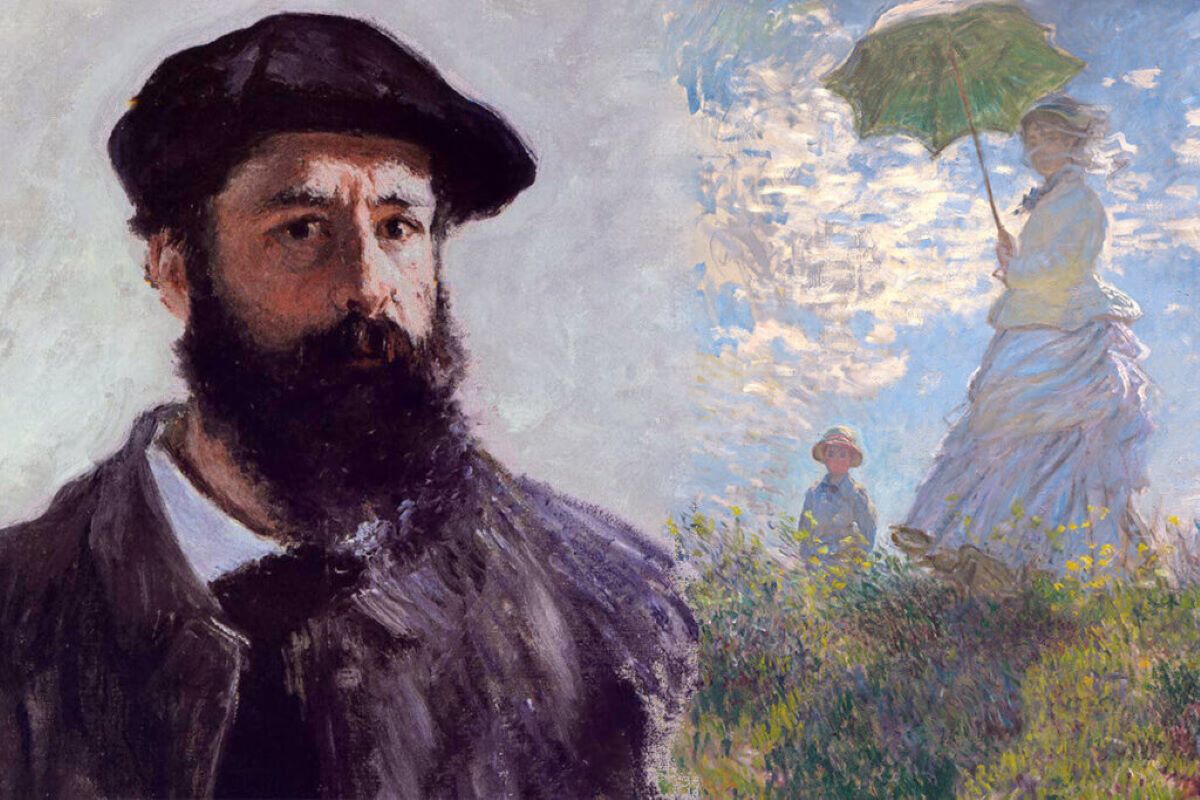
Claude Monet
Impressionist painters include Mary Cassatt, Edgar Degas, Max Liebermann, Édouard Maney (although Manet did not consider himself part of the movement), Claude Monet, Berthe Moríot, Camile Pissarro, Pierre Auguste Renoir, Alfred Sisley, Henri Marie Raymond de Toulouse-Lautrec, etc.
Claude Monet, the painter considered the father of Impressionist painting. His works demonstrated the courage of Impressionism, breaking with traditional painting methods in search of the vibrancy of color and the effects of light.
The painters Vincent Van Gogh, Paul Cézanne, Paul Gauguin, and Georges Seurat, although steeped in the traditions of Impressionism, pushed the boundaries of the style in different creative directions, laying the foundations for 20th-century art.
For historical convenience, these painters are called “post-impressionist” painters, but apart from the influence of Impressionism, they have little in common. Van Gogh moved art toward expressionism, Cézanne toward cubism, Gauguin and Seurat toward fauvism and pointillism.
Skilltrans introduces you to explore these related courses. Please click on the course name below to learn more:
Cartoon Drawing For Absolute Beginners
You will learn how to draw cute cartoon characters. Also, you will learn how to draw simple cartoon backgrounds. We’ll start with the basics. For example whats the anatomy of our cute cartoon characters and what shapes we’ll use to draw them. Then we’ll jump into different facial expressions so that you can express emotion with your characters. Also different hairstyles, a lot of practice sheets, and many more.
Character Art School: Complete Coloring and Painting
Whether you want to learn to color and paint characters for games, comics, cartoons, manga, animation and more, this course has you covered. I'm not teaching you a 'method' or a 'way' to color and paint, I'm teaching you to be a fundamentally good character colorist and painter.
Painting in the loose style with watercolors is easily one of my favorite things to do. Learn how to use simple brushstrokes to create six different flowers: lavender, lilac, hibiscus, cherry blossom, calla lily, and magnolias. So get ready to let loose with your brush and apply lots of creative freedom to your paintings.
Conclusion
Impressionism, a movement that revolutionized the art world, continues to captivate and inspire viewers today. Its focus on light, color, and the fleeting nature of perception has left a lasting impact on the development of modern art.
Let's explore light, color, and the human experience through Skilltrans's course. We will see that art does not stop at what we see but also the deep meanings behind each painting.

Meet Hoang Duyen, an experienced SEO Specialist with a proven track record in driving organic growth and boosting online visibility. She has honed her skills in keyword research, on-page optimization, and technical SEO. Her expertise lies in crafting data-driven strategies that not only improve search engine rankings but also deliver tangible results for businesses.



